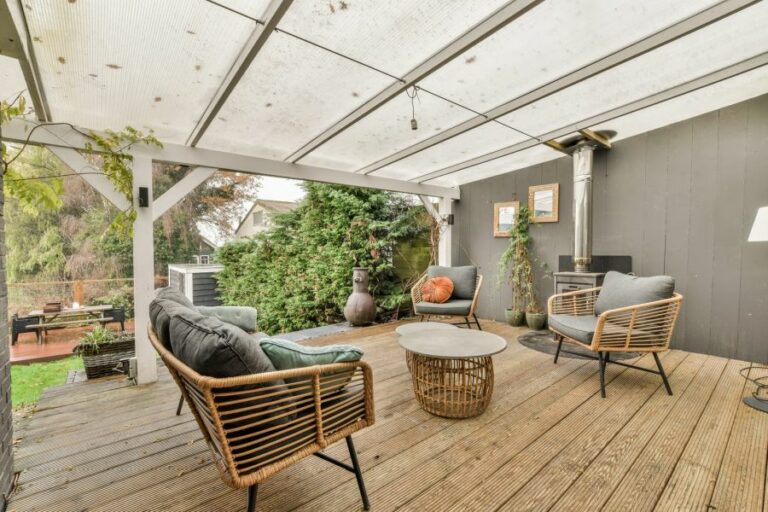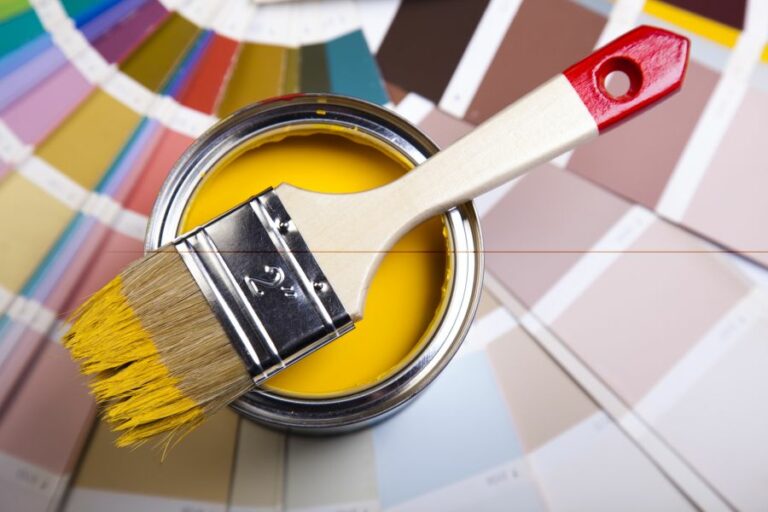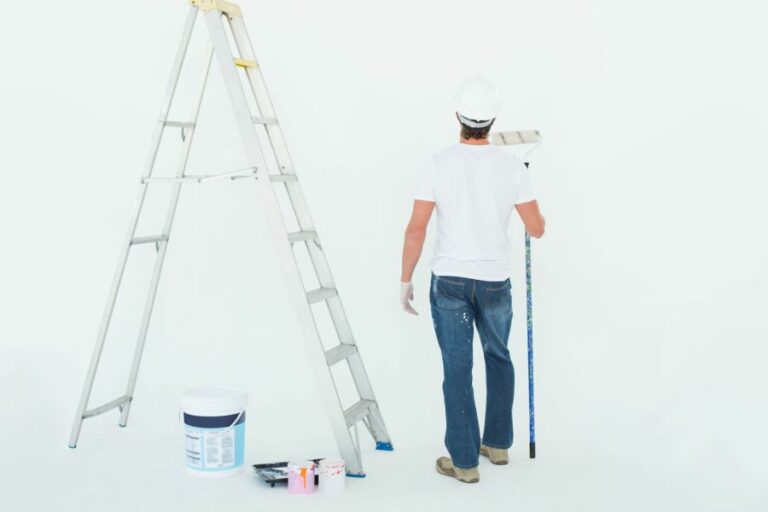Outdoor Concrete Wall Paint, 25 Things You Should Know
Are you looking to breathe life into your home exterior, garden, or yard? This blog post on outdoor concrete wall paint explores the best choices to create a stunning visual transformation and delves into the practical benefits of using specialized paint for concrete walls. Discover the key factors to consider in selecting the right paint, along with tips and tricks for a flawless application.
Outdoor concrete wall paint:
Outdoor concrete walls, commonly found in residential and commercial properties, can experience weathering that leads to chipping and discoloration. Repainting these walls can improve aesthetics, offer protection from the elements, and make maintenance easier. Using a comprehensive guide, choose the right paint and tools, prepare and clean the surface, and follow the best practices for a successful application to prolong life and enhance the property’s overall value.

Dive into this comprehensive guide on outdoor concrete wall paint, where we’ll explore different types, finishes, and techniques. Discover expert preparation, application, and maintenance advice to achieve beautiful, long-lasting results in your exterior space.
Contents
- 1 Exterior Concrete Wall Coating and Paint
- 2 Which Type of Paint is Suitable for Exterior Concrete Walls?
- 3 Is it Possible to Apply Paint on an Exterior Concrete Wall?
- 4 Is It Possible to Apply Paint on Exterior Concrete Surfaces?
- 5 Does Wall Paint Exist that Resembles the Appearance of Concrete?
Exterior Concrete Wall Coating and Paint
Outdoor concrete walls are ubiquitous in many homes and commercial properties, providing a solid and durable structural foundation. Over time, however, weather and wear can begin to take their toll on these walls, causing unattractive chipping and discoloration.
That’s where outdoor concrete wall paint comes in.
• Benefits of Painting Outdoor Concrete Walls
There are several benefits to repainting your outdoor concrete walls, including:
– Aesthetic Appeal
A fresh coat of paint can dramatically improve the appearance of tired and aging concrete walls. With the right color choice, you can create a contemporary and stylish look that enhances the overall aesthetic of your property.
– Protection
Outdoor concrete is exposed to harsh weather conditions, which can lead to damage and erosion over time. Applying quality outdoor concrete wall paint acts as a protective barrier, shielding your walls from damaging moisture, UV exposure, and temperature fluctuations.
– Easy Maintenance
Once painted, outdoor concrete walls become easier to clean and maintain. Dust, dirt, and grime can be removed with a simple wipe-down, whereas bare concrete may require more vigorous scrubbing or pressure washing.
– Cost-effective
Investing in the upkeep of your concrete walls can prolong their lifespan and prevent costly repairs or complete replacements. Additionally, painting your walls can save you money in the long run by reducing maintenance costs and enhancing the overall value of your property.
• Essential Tools for Painting Outdoor Concrete Walls
When undertaking any DIY painting project, it’s crucial to have the right tools on hand. For painting outdoor concrete walls, you should gather the following items:
- High-quality outdoor concrete wall paint
- Primer (if required)
- Paintbrushes (both wide for large surfaces and narrow for edges)
- Paint roller and extension pole (if needed)
- Drop cloths and protective coverings for surrounding surfaces
- Painter’s tape
- Wire brush or power washer (for removing loose debris)
- Sandpaper and sanding block (for smoothing rough areas)
- Paint tray and mixing sticks (if using a multi-component paint system)
- Disposable gloves and clothing
• Choosing the Right Outdoor Concrete Wall Paint
Selecting the right paint for your concrete walls is critical to the success of your project. Here are a few things to keep in mind when choosing your paint:
– Type of Paint
Several types of outdoor concrete wall paint are available, including elastomeric, epoxy, and acrylic. Each has its own advantages and drawbacks:
- Elastomeric paints are highly flexible and can bridge cracks and small imperfections, providing excellent waterproofing qualities. However, they can be more expensive and may require additional curing time.
- Epoxy paints create a durable and chemical-resistant finish, but their application can be more labor-intensive and require a longer drying time.
- Acrylic paints are typically affordable and easy to work with, offering good UV protection and environmental resistance. They may not be as heavy-duty as the other options, but they are popular for residential applications.
– Sheen
Choose an appropriate sheen based on your desired finish and the wall’s location. Flat or matte sheens are generally recommended for concrete walls, as they can better mask surface imperfections.
However, a semi-gloss or gloss sheen may be suitable if you are looking for a more reflective or easy-to-clean surface.
– Color
Consider your property’s surrounding color scheme and overall design when selecting your paint color. Neutral or earth-tone colors are generally favored, but you can also choose bold and vibrant colors to create a stunning statement wall.
• How to Paint Outdoor Concrete Walls: Best Practices
Follow these steps to ensure a professional and long-lasting paint job on your outdoor concrete walls:
1. Prepare the Surface
Begin by removing any loose debris, moss, or algae from the surface of your wall using a wire brush or power washer. Then, smooth out any rough areas using sandpaper.
2. Clean the Wall
Using a mixture of warm soapy water and a stiff brush, scrub the wall to remove any dirt or grime. Allow the wall to dry completely before painting, as moisture can negatively affect the paint adhesion.
3. Prime (if necessary)
Some outdoor concrete wall paints require a primer to ensure proper bonding and coverage. If your chosen paint requires a primer, apply it according to the manufacturer’s instructions.
4. Apply the Paint
Use a paintbrush or roller to apply your outdoor concrete wall paint in even, overlapping strokes. Be sure to follow the manufacturer’s recommendations regarding application and drying times.
5. Add Additional Coats (if needed)
If your wall requires multiple coats of paint, allow the first coat to dry thoroughly before applying the next. The number of coats needed will depend on your chosen paint’s coverage, color, and finish.
• In Conclusion
Painting outdoor concrete walls is a practical and cost-effective way to breathe new life into your property. By following the advice in this guide, you can ensure a successful and long-lasting paint job that will protect your walls from the elements and enhance the overall aesthetic of your space.
With a little time and effort, you can give your concrete walls a fresh, updated appearance that you can be proud of.
Which Type of Paint is Suitable for Exterior Concrete Walls?
When it comes to painting exterior concrete walls, choosing the right paint is crucial to achieve long-lasting results and the best finish. There are numerous factors to consider before making a decision.
• Types of Paint for Exterior Concrete Walls
There are several types of paint that can be used on exterior concrete walls. We will explore four of the most popular and recommended types: masonry paint, elastomeric paint, acrylic latex paint, and epoxy paint.
– Masonry Paint
Masonry paint, also known as mineral paint, is specifically designed for use on concrete, brick, and other masonry surfaces. It offers great durability and long-lasting protection against harsh weather conditions, making it an ideal choice for exterior concrete walls.
Some of the benefits of masonry paint include:
- Excellent adhesion to the concrete surface.
- Vapor permeability allows trapped moisture to escape without compromising the paint’s integrity.
- Resistance to fading, chalking, and peeling.
- Available in a variety of colors and finishes.
– Elastomeric Paint
Elastomeric paint is a highly durable and flexible paint that can be used on a variety of surfaces, including exterior concrete walls. It is known for its superior waterproofing capabilities and ability to bridge hairline cracks in the concrete surface.
Using elastomeric paint offers the following advantages:
- High flexibility allows for the concrete surface’s expansion and contraction without cracking.
- Excellent waterproofing properties to protect the concrete surface from water penetration.
- Great durability and resistance to harsh weather conditions, such as sunlight, heat, and cold.
- Can cover small cracks and imperfections in the concrete surface.
– Acrylic Latex Paint
Acrylic latex paint is a versatile and commonly used paint for exterior surfaces, including concrete walls. Its water-based formula provides good adhesion, flexibility, and durability.
Benefits of using acrylic latex paint include:
- Quick drying time and easy cleanup with soap and water.
- Good resistance to fading and peeling.
- Can be applied directly to a clean and dry concrete surface without the need for a separate primer.
- Available in a wide range of colors and finishes.
– Epoxy Paint
Epoxy paint is a two-component paint that provides a durable and chemically resistant coating for exterior concrete walls. It is known for its excellent adhesion, abrasion resistance, and ability to withstand harsh chemicals and environmental factors.
Some of the advantages of using epoxy paint on exterior concrete walls are:
- Exceptional durability and long-lasting protection.
- Resistance to chemicals, oils, and other substances that can damage the concrete surface.
- Suitable for use in high-traffic areas, as it can withstand wear and tear.
- Creates a glossy and highly reflective finish.
• Surface Preparation and Application Tips
To achieve the best results when painting exterior concrete walls, it is essential to follow proper surface preparation and application techniques. Here are some recommendations to ensure a successful painting project:
- Clean the surface: Remove any dirt, mold, mildew, and loose or chipping paint from the concrete surface using a pressure washer or a wire brush. Allow the surface to dry completely before proceeding.
- Fix cracks and holes: Repair any cracks or holes in the concrete surface using a quality patching compound. Follow the manufacturer’s instructions and allow the compound to dry and cure before applying paint.
- Apply a primer: Although not always necessary for acrylic latex paints, using a primer specifically designed for masonry surfaces can provide better adhesion and long-lasting results. Follow the manufacturer’s instructions for proper application and drying time.
- Choose the right paint: As mentioned earlier in this article, consider the specific needs of your exterior concrete walls when selecting a paint type. Factor in elements such as climate, exposure to water, and overall aesthetic goals.
- Apply the paint: Follow the manufacturer’s instructions for proper application techniques and the recommended number of coats. Generally, two or more coats are required for adequate coverage and durability. Allow the paint to dry completely between coats and before resuming use of the area.
• Final Thoughts
Selecting the ideal paint for exterior concrete walls is important to ensure durability, protection, and aesthetic appeal.
By considering factors such as the specific needs of your concrete walls and following proper preparation and application techniques, you can achieve a successful painting project that will stand the test of time.
Is it Possible to Apply Paint on an Exterior Concrete Wall?
Absolutely, you can paint an outdoor concrete wall! Adding a fresh coat of paint to a concrete wall enhances its appearance and extends its lifespan.
• Choosing the Right Paint
When painting an outdoor concrete wall, selecting the proper paint to withstand weather variations and adhere to the concrete surface is crucial. Here are some recommendations for choosing the right paint:
– Masonry Paint
Masonry paint is a latex-based paint specifically designed for outdoor surfaces like concrete. It contains binders that allow the paint to expand and contract with temperature changes, thus reducing cracking and peeling.
– Elastomeric Paint
Elastomeric paint is a high-quality option providing a waterproof, flexible, and durable finish. This paint is often more expensive than masonry paint but offers superior protection against the elements.
• Preparing the Surface
Before painting, it’s essential to clean and prepare the concrete wall to ensure proper adhesion of the new paint. Follow these steps to get your wall ready for a fresh coat of paint:
– Clean the Wall
The concrete surface should be clean and free of dirt, dust, and mold to ensure proper adhesion. You can use a power washer or a garden hose with a spray nozzle, followed by a scrub brush and a mild detergent solution to clean the wall thoroughly.
– Repair Cracks and Damage
Inspect the wall for cracks and damage, as these should be repaired before painting. Small cracks can be filled with a ready-mix concrete patching compound, while larger ones might need a more robust solution like epoxy filler.
– Cure and Dry the Wall
It’s essential to allow the concrete wall to cure and dry for a minimum of 30 days after construction or repair before applying paint. This step ensures that all moisture has escaped from the concrete, preventing paint failure due to trapped moisture.
• Priming the Concrete Wall
A high-quality masonry primer is strongly recommended to create a uniform surface that allows for better paint adhesion and coverage. Choose a primer specifically designed for outdoor concrete surfaces and follow these steps for application:
- Stir the primer well and pour it into a paint tray.
- Use a paintbrush to cut in around the edges and corners of the wall, applying a smooth, even layer of primer.
- Switch to a paint roller with an extension handle for large, flat surfaces. Apply the primer in a vertical W or M pattern, then fill the gaps using horizontal strokes. Ensure complete and even coverage.
- Allow the primer to dry for the recommended time specified on the product label, typically 2-4 hours.
• Painting the Outdoor Concrete Wall
Now it’s time to paint your concrete wall! Here’s how to achieve a professional and lasting result:
– Choose the Right Tools
For best results, use a high-quality paintbrush for cutting in and a paint roller with an extension handle to cover large surface areas. A roller cover with a -inch to 1-inch nap is recommended for textured concrete surfaces.
– Start Painting
- Stir the paint well and pour it into a paint tray.
- Use a paintbrush to cut in around the edges and corners of the wall.
- Apply the paint with a roller using a vertical W or M pattern, then fill in the gaps with horizontal strokes.
- Allow the paint to dry for the recommended time specified on the product label, typically a few hours.
– Apply a Second Coat
A second coat of paint is usually necessary for an even, long-lasting finish. Wait for the first coat to dry according to the manufacturer’s instructions before applying a second coat in the same manner as before.
• Maintain Your Painted Concrete Wall
Here are some tips to keep your painted concrete wall looking fresh and prolong its lifespan:
- Periodically clean the painted surface with a mild detergent solution and a gentle scrub brush to prevent dirt and mildew buildup.
- Keep an eye out for damage, such as cracks or peeling paint, and perform repairs promptly to maintain the integrity of the painted surface.
- Opt for reapplication of paint every 7-10 years, depending on the wear and tear of the painted surface and the quality of the paint used.
In conclusion, painting an outdoor concrete wall is a great way to improve its appearance and protect it from the elements. You’ll achieve a lasting, beautiful finish on your outdoor concrete wall by following the correct steps, using the appropriate tools, and choosing high-quality paint and primer.
Factors | Considerations |
|---|---|
Surface Preparation | Clean the wall to remove dirt, dust, and mold. Use a pressure washer if needed. Repair any cracks or holes before painting. |
Primer | Apply a concrete primer to improve adhesion and prevent paint peeling. This step is essential for a long-lasting paint job. |
Paint Type | Use a paint specifically formulated for concrete and masonry surfaces, such as acrylic or elastomeric paint. |
Application | Apply the paint with a roller or brush, following the manufacturer’s instructions. It may require multiple coats for full coverage. |
Weather Conditions | Paint during mild, dry weather to ensure proper drying and curing. Avoid painting during rain or extreme temperatures. |
Is It Possible to Apply Paint on Exterior Concrete Surfaces?
Painting exterior concrete is possible and an excellent way to revamp the appearance of your home or commercial property.
• Benefits of Painting Exterior Concrete
- Aesthetics: A fresh coat of paint can dramatically improve the appearance of exterior concrete surfaces, giving your home or office building a clean, modern look.
- Durability: High-quality concrete paints protect your concrete surfaces from weathering, staining, and general wear and tear. They create a robust barrier against water, dirt, and chemicals, extending the life of your concrete.
- Safety: Many concrete paints provide slip-resistant finishes, making your outdoor walkways, patios, and stairs safer by reducing the risk of slips and falls.
- Maintenance: Painted concrete surfaces are easier to clean and maintain compared to their unpainted counterparts. They resist dirt build-up and stains, requiring less effort to keep them in top condition.
• Choosing the Right Paint for Exterior Concrete
Selecting the right type of paint is crucial for the durability and appearance of the finished project. Two broad categories of paints are suitable for exterior concrete surfaces: water-based acrylics and solvent-based epoxy coatings.
– Water-Based Acrylics
Water-based acrylic paints are popular due to their environmental friendliness, easy application, and relatively low cost. They provide a durable and UV-resistant finish, suitable for various concrete surfaces, including driveways, sidewalks, and patios.
Some water-based acrylics also contain additives that enhance their slip resistance.
Pros:
- Environmentally friendly
- Easy to clean up with soap and water
- Fast-drying
- Moderate UV resistance
Cons:
- May not be as durable as epoxy coatings
- Can be susceptible to peeling if applied improperly
– Solvent-Based Epoxy Coatings
Solvent-based epoxy coatings are a more robust and long-lasting option for exterior concrete surfaces. They create a hard, glossy finish that resists chemicals, abrasions, and heavy traffic. However, they have a strong odor and require adequate ventilation during application.
Pros:
- Highly durable and long-lasting
- Excellent chemical and abrasion resistance
- Strong adhesion to the concrete substrate
Cons:
- Strong odor during application
- Requires more extended drying and curing time
Before choosing a paint, always check the manufacturer’s recommendations for compatibility with your specific concrete surface and environmental conditions.
• Preparing for the Painting Project
- Clean the Surface: First, thoroughly clean your exterior concrete surface to remove all dirt, grease, and other contaminants that can interfere with proper paint adhesion. You may need to use a pressure washer, a commercial degreaser, or a combination of both.
- Repair Damages: Inspect the concrete surface for cracks, holes, or structural damage. Repair these damages using a concrete patching compound, following the manufacturer’s guidelines. Allow the repairs to dry and cure according to the recommended timeline.
- Apply Concrete Sealer: If the concrete surface is prone to efflorescence (white, powdery residues) or moisture infiltration, you may need to apply a concrete sealer to minimize these issues. Follow the sealer manufacturer’s instructions for application and drying time.
- Prime the Surface: Use a high-quality concrete primer to ensure an even finish and proper adhesion of the paint. It will help to fill any remaining pores and create a smooth painting surface.
• Painting the Exterior Concrete
- Mix the Paint: Before starting, mix the paint thoroughly to ensure color consistency and proper dispersion of any additives.
- Use Proper Equipment: Utilize good-quality brushes, rollers, or sprayers specifically designed for exterior concrete surfaces. The right equipment will help you achieve a more even and professional-looking finish.
- Apply Paint in Thin Coats: To avoid peeling and blistering, apply your chosen paint in thin, even coats. Allow each coat to dry according to the manufacturer’s recommendations before applying the next layer. Most exterior concrete surfaces will require at least two coats for optimal coverage and durability.
- Observe Proper Drying Time: Allow the final coat of paint to dry and cure properly as specified by the paint manufacturer. Drying and curing time may vary depending on the type of paint, environmental conditions, and thickness of the paint layer.
• Additional Tips for a Successful Finish
- Always follow the manufacturer’s application, drying, and curing time guidelines.
- Avoid painting exterior concrete surfaces in extreme temperatures or wet conditions, as it can adversely affect paint adhesion and drying time.
- If possible, schedule your painting project during a time when the area will see minimal foot or vehicle traffic to prevent early wear or damage to the freshly painted surface.
In conclusion, painting exterior concrete is a feasible and effective way to improve the appearance and durability of your property.
By choosing the right paint, properly preparing the surface, and following the correct application techniques, you can achieve a long-lasting, attractive concrete surface that enhances your home’s or commercial building’s beauty and value.
Question | Answer |
|---|---|
Can you paint the exterior concrete? | Yes, you can paint exterior concrete. It requires the use of a specific type of paint, known as masonry or concrete paint, and proper surface preparation to ensure good adhesion and lasting results. |
Does Wall Paint Exist that Resembles the Appearance of Concrete?
In recent years, the aesthetic appeal of raw concrete in interior design has surged in popularity, with many seeking this look for their homes and workspaces. However, re-doing an entire wall with concrete can be expensive and time-consuming.
An alternative solution is using wall paint that mimics the appearance of concrete.
• Types of Concrete-Look Wall Paint
Several types of wall paint on the market can give the appearance of concrete, each with its unique properties and application techniques. Here, we examine some of the most popular.
1. Decorative Textured Paint
Decorative textured paint is available in different base colors that mimic the look of concrete. It is relatively easy to apply, even for those with limited DIY experience. The texture of the paint mimics the surface of concrete, and it can be used to create either a very smooth or rough concrete appearance.
I recommend: One such paint is the Rust-Oleum Natural Effects Spray Paint, which is easy to apply and dries quickly.
2. Cement-Based Paint
Cement-based paint is a special kind of paint that contains actual cement, so it takes on the properties of actual concrete. It mimics the texture and durability of concrete, making it a more authentic substitute. This type of paint can be a bit more challenging to apply, so it might not be the best choice for beginners.
I recommend: The Valspar Signature Cement Paint is a reliable and robust choice in this category.
3. Faux Finish Techniques Using Regular Paint
If you’re not interested in the dedicated concrete-look paints, you can use regular latex or acrylic wall paint and add certain faux finish techniques to give the appearance of concrete.
This can be achieved by mixing different shades of grey paint while applying and using a textured roller to create the desired concrete-like effect.
I recommend: A combination of Behr Premium Plus Interior Paint in various shades of grey can help create a convincing concrete look.
• Application Process for Concrete-Look Wall Paint
The process of applying concrete-look paint will vary depending on the type of paint and the desired finish. However, the following steps outline a general process:
- Preparation: Begin by cleaning the walls and ensuring they are free from dust, dirt, and loose or peeling paint. Fill any holes or cracks with spackle and let it dry before sanding the surface smoothly. Apply a primer to help the paint adhere to the surface better and create a more uniform finish.
- Base Coat: Apply the selected base color to the entire wall using a roller (for huge textures) or a brush (for smaller textures and details). The base color should be a lighter version of your desired concrete color, as it will serve as the foundation for the effect.
- Texturing: Once the base coat is dry, use a textured roller, sponge, trowel, or any other tools that will create the desired texture on the wall. Apply additional shades of paint (both lighter and darker versions of the concrete color) to create depth and dimension, mimicking the look of raw concrete.
- Finishing Touches: After achieving the desired texture and depth, you can add further details by using a small brush and darker paint colors to accentuate the texture. You can also add a subtle sheen by applying a clear glaze or sealer over the finished wall.
- Clean Up: Lastly, remember to clean your tools, including brushes, rollers, and sponges, with soap and water.
• Advantages and Drawbacks of Concrete-Look Wall Paint
– Advantages
- Concrete-look wall paint can be a more cost-effective solution than actually using concrete to cover walls.
- The application process is faster and less labor-intensive compared to other structural upgrades like installing concrete panels or slabs.
- Paint can be applied to various surfaces, including drywall, plaster, brick, and even wood.
- Concrete-look paint is customizable, allowing for the creation of unique designs, patterns, and textures depending on the type of paint and application technique.
– Drawbacks
- The durability of the paint may not match that of actual concrete; it may be more susceptible to damage, chipping, or peeling over time.
- The paint may not provide the same inherent insulating properties or sound-dampening qualities that actual concrete possesses.
In conclusion, concrete-look wall paint can be an effective, budget-friendly way to incorporate the trendy concrete aesthetic into your space. With various types of paint to choose from and a plethora of application techniques, you can customize your walls and achieve the industrial, modern look you desire.







